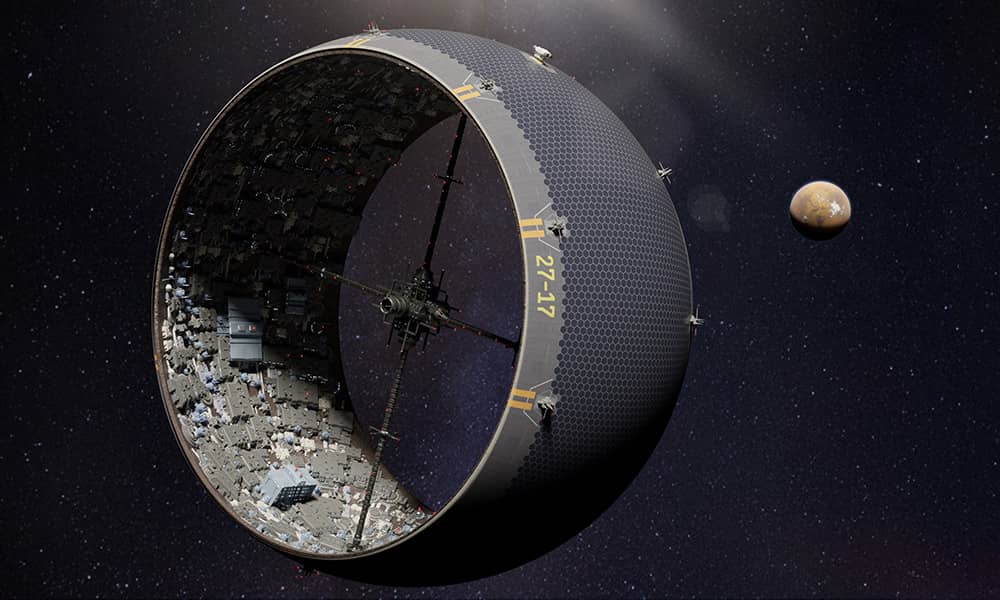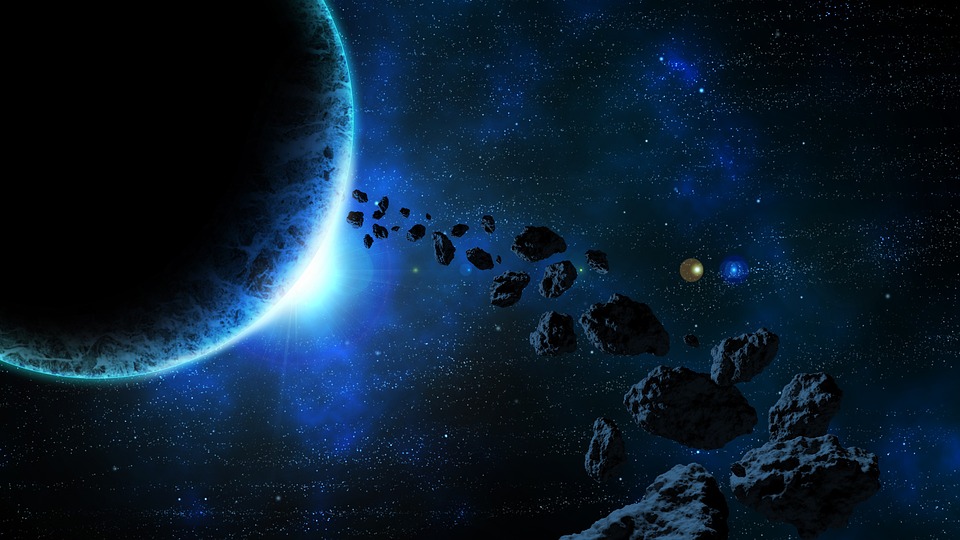Is there a future for humanity beyond Earth? This is the question many scientists keep thinking about and trying to answer. Our home planet is not a bad place, but you never know what might happen in the future. A nuclear disaster, overpopulation, pandemics, or an asteroid hit are some of the many potential scenarios in which the Earth can become endangered, so it’s always good to keep our options open. And even if everything is great here, cities in space can help in our exploration of our solar system and beyond.
However, space cities currently only exist in science fiction. So are space cities actually possible? If so, how exactly?
Asteroids may hold the key to our future, say scientists from the University of Rochester. The researchers, who include Adam Frank, the Helen F. and Fred H. Gowen Professor of Physics and Astronomy, and Peter Miklavčič, a Ph.D. candidate in mechanical engineering and the paper’s first author, lay out a strategy for building sizable cities on asteroids in what they call a “wildly theoretical” paper published in the journal Frontiers in Astronomy and Space Sciences.
“Our paper lives on the edge of science and science fiction,” Frank says. “We’re taking a science fiction idea that has been very popular recently—in TV shows like Amazon’s The Expanse—and offering a new path for using an asteroid to build a city in space.”
Have you heard of “O’Neill cylinders” a.k.a spinning space metropolises?
NASA hired physicist Gerard O’Neill in 1972 to create a space habitat that might potentially support human habitation. O’Neill and his colleagues devised a proposal for spinning space metropolises known as “O’Neill cylinders,” which are made up of two cylinders that rotate in opposing directions and are connected at either end by a rod. The cylinders would rotate quickly enough to create artificial gravity on their interior surfaces, yet slowly enough to prevent motion sickness for those inside.
Since then, human-populated O’Neill cylinder-like habitats have been shown in many sci-fi movies and TV shows. And although these structures provide a solution for space’s absence of gravity, it would be difficult and expensive to get the materials needed to make the O’Neill cylinders into space.
So, what if we use asteroids as building blocks?
Asteroids are rocky objects in orbit around the sun that were left over from the solar system’s birth about 4.6 billion years ago. According to scientific estimates, our solar system is home to around 1,000 asteroids that are at least one mile big.
“All those flying mountains whirling around the sun might provide a faster, cheaper, and more effective path to space cities,” Frank says.
Asteroid abundance is just one benefit for the potential human settlements; there are many more, such as the rock layers that act as a natural barrier against dangerous cosmic radiation from the sun.
However, the researchers discovered that asteroids have numerous big drawbacks as well. For example, the rock that makes up asteroids is not strong enough to withstand even one-third of Earth’s gravity from spinning. An asteroid would simply fracture and break once it was put into rotation. Furthermore, the majority of asteroids are “rubble piles,” which are collections of loose boulders, stones, and sand kept together by the weak mutual gravitational attraction of space. The scientists would need to learn how to work with debris piles if they wished to create space habitats out of these asteroids.
The solution could be a giant ultra-strong bag. The scientists envision wrapping an asteroid in a flexible, mesh bag consisting of light, strong carbon nanofibers—carbon tubes that are only a few atoms wide. In addition to holding its own weight as it spins, the bag would enclose and hold the entire spinning mass of the asteroid’s debris and the settlement inside.
Here is how the procedure would actually go. The asteroid would be spun to create artificial gravity, which would break it apart. Then, the carbon nanofiber bag that is surrounding the asteroid would grow as the fragments of the asteroid debris flew outward. The carbon nanofibers would snap taut when the bag expanded to its full size, trapping the crumbling debris.
“Obviously, no one will be building asteroid cities anytime soon, but the technologies required to accomplish this kind of engineering don’t break any laws of physics,” Frank says. “The idea of asteroid cities might seem too distant until you realize that in 1900 no one had ever flown in an airplane, yet right this minute thousands of people are sitting comfortably in chairs as they hurdle at hundreds of miles an hour, miles above the ground. Space cities might seem like a fantasy now, but history shows that a century or so of technological progress can make impossible things possible”, concludes professor Frank.




